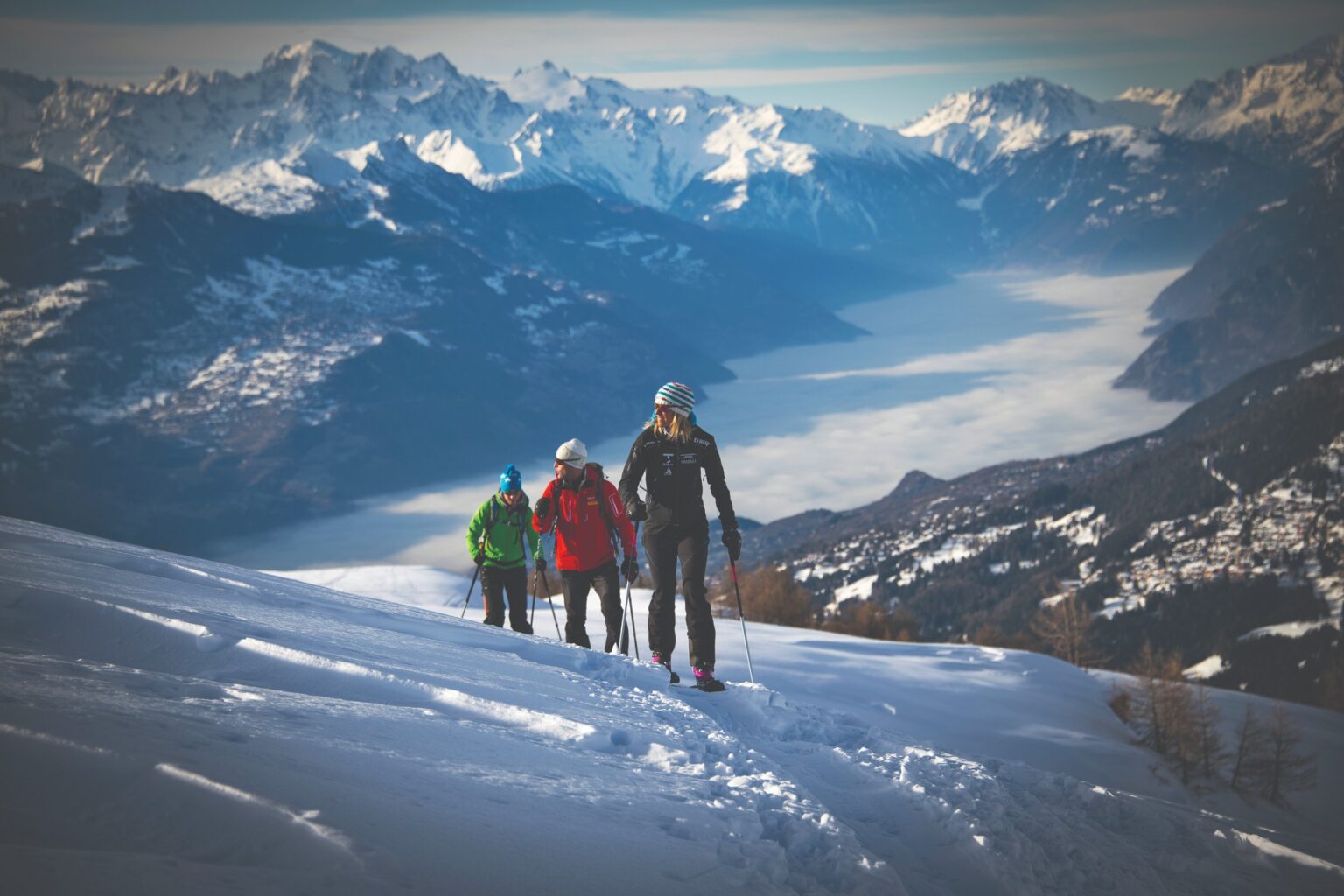Backcountry Basics – Duck under the ropes


As an IFMGA Mountain Guide, you are probably expecting me to tell you not to go off-piste without someone like me? But you’d be wrong. I can still remember my first excited forays off the groomers, long before I went through all that training and got a badge. As a dad, I love watching my kids get the same kicks; and as a Guide, it matters to me that they (and my clients) have a few solid principles and backcountry basics for safe exploration beyond the piste markers. Truth is – plenty of skiers have the ski ability to enjoy some wild adventures and, if you keep it simple, there is no reason why you should not get off-piste right away. Here are the rules . . .
Remember the fire triangle (fuel, heat, oxygen) you learned about as a kid? Well avalanches are kinda similar: we need three ingredients: a slope (terrain); an unstable snowpack (conditions); and a trigger (usually people) for an avalanche to happen.
The bad news is that explains why there is no such thing as being just-a-bit off piste! It is binary: you are either on piste (where the pisteurs will manage the risk and look after you) or you are off-piste (and on your own).
The good news is that, like the fire triangle, if you remove just one of those components, you can be safe from a slide. Think about it – you could have the worst snowpack in the world on a football pitch, and even the best explosives won’t cause it to avalanche. So if you are thinking about ducking under the ropes, all you need to do is go to the right places, in the right conditions, with the right people. Simple eh? Let’s look at each one in turn:
We have a dilemma here. There is no such thing as safety in numbers (more people = greater load on the slope) but we need enough of a team to be self-sufficient if something goes wrong. Given that “less than three there should never be” and too many is too heavy (and unwieldy to manage) the ideal group size is 3-6 people.
Even better if those 3-6 people have the same attitude as you regarding risk threshold; transceiver training and practice; and the discipline to ski safely – spreading the load and looking out for one another. Discovering the world off-piste with regular, reliable mates is one of life’s greatest pleasures!
I’m gonna assume you wouldn’t try to learn to swim by jumping in the middle of the deepest, coldest lake you can find? Thought not! So why the F’ do so many people try to cut their teeth on such extreme ski terrain? The secret, just like swimming, is to gently dip your toe somewhere you can back out of any time you choose – to begin with at least!
Practice makes permanent (not perfect). For your first forays into wild snow, you want to make as many good quality turns as possible, then be able to stop and reset if it all gets a bit rag-order (and it will). Go to places where you can head back to the piste any time you need to get back in control and back in balance. Ski off and find your feet (and balance). Ski until you end up in the back seat or find some unfavourable snow. Then traverse back to the confidence building groomers to get back in the right position (and mindset).
Firstly, a confession: there is no such thing as the right (or even wrong) conditions. Instead, there is every wonder of creation that mother nature can throw at you. From bottomless blower pow to the worst forsaken crud you can imagine. You need to be either: very good at working out where to find the good stuff (and avoiding the duff stuff) which takes a lot of time, or . . .able to ski well enough to handle whatever Ullr (the god of winter) might put in your way.
The really good news is that ski technique stays the same – it is usually just your mojo that changes! Don’t get psyched out by not being able to see your skis. Truth is you don’t usually need to look at them anyway. So keep your head up, look well ahead and trust them to do their thing like normal. Compared to being on the pistes, you just need to be more soft and dynamic, just like the snow you want to ski.
If all else fails, develop a bombproof downhill kick turn! This will be your best friend in negotiating sever crust and crud. It will also be your universal “get out of jail free” card – so you can always stop and traverse back to safety!
Finally, know when not to go! Avalanche warnings are honest advice from experts. They are not scare-mongering killjoys. So take them seriously. Heed local advice and warnings on the day. Never ski a closed run – you have no idea why it is closed. Never blindly follow other groups – you have no idea if they are skilled, or just lucky (for now).
Take your first (however tentative) turns off piste this winter and you will unlock a lifetime of discovery – and pride in making your own decisions. Pretty soon it will just be you, your mates, and the mountains out there. Enjoy . . .